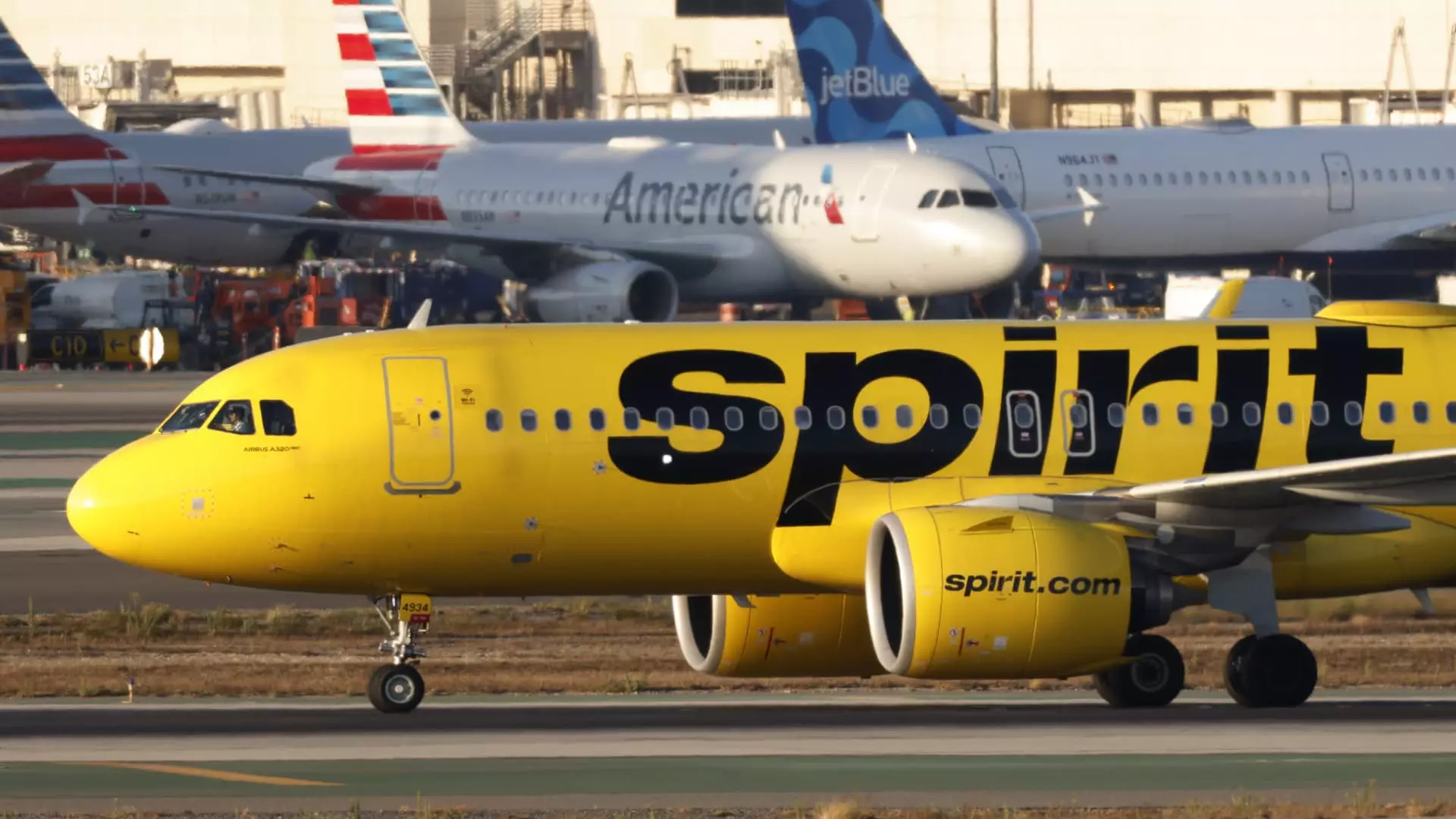Spirit Airlines has once again made headlines with its aggressive cost-cutting measures, signaling a company in crisis but also in transition. Under CEO Dave Davis’s leadership, the airline announced a planned 25% reduction in capacity for the upcoming year. This decisive move, aimed at streamlining operations and focusing on core markets, reveals an airline desperate to regain its footing amid turbulent financial waters. The airline’s strategy seems to revolve around pruning its network to rid itself of unprofitable routes and reduce operational costs—a classic move in distressed aviation management, but one that carries risks of losing market share to competitors.
The scale of this cut is not insignificant; it echoes the capacity reduction seen after Spirit’s previous exit from bankruptcy earlier this year. Such recurrent trimming suggests a fundamental challenge: the airline is continuously adjusting, yet the core issues—high costs, shifting consumer preferences, and fierce competition—persist. This proactive pruning can be viewed as a necessary, though painful, step toward survival, but it raises questions about how much more the airline can trim before it risks becoming irrelevant in a crowded market arena.
Implications for Employees and Labor Relations
The ongoing cost consolidation is taking a toll on Spirit’s workforce. Reports of furloughs, pay cuts, demotions, and unpaid leaves indicate a turbulent labor environment. The airline’s approach seems to lean heavily on negotiations with unions—an effort to soften the blow and avoid even more severe workforce reductions. Still, the message from the management is clear: tough decisions are on the horizon, with implications that will inevitably ripple through all levels of the staff.
This tense climate underscores a broader dilemma: balancing financial stability with employee well-being. For flight crews and ground staff, these measures threaten morale and job security. The fact that the airline is engaged with union leaders hints that negotiations will be protracted and possibly contentious. It remains to be seen whether Spirit can navigate this storm without alienating its workforce or causing operational disruptions that could further damage its reputation.
Strategic Challenges in a Competitive Landscape
Spirit’s struggles are emblematic of the highly competitive and rigidly segmented airline industry. Once celebrated for its ultra-low-cost model and bright yellow livery, the airline faced a perfect storm of rising operational costs, dwindling demand, and fierce rivalry from larger, more diversified carriers that can leverage economies of scale. The fallout from a failed acquisition by JetBlue left Spirit isolated, forcing it to confront its vulnerabilities alone.
Post-bankruptcy, Spirit focused on restructuring its debt and minimizing costs, yet recent losses—approaching $257 million—highlight the difficulty of translating these efforts into profitability. The decision to scale back routes and curtail growth ambitions signals a shift from expansion to consolidation, but it also opens the door for competitors to seize the opportunity. Airlines like United, Frontier, and JetBlue are actively expanding their fleets and route networks, positioning themselves to capture displaced Spirit travelers.
The key question remains: can Spirit leverage this period of austerity to reinvent itself? Or will its cutbacks diminish its relevance, turning it into a niche player limited to a shrinking segment of price-sensitive travelers? The airline’s future hinges on how well it can balance cost reductions with the preservation of a compelling value proposition—something increasingly difficult as market dynamics evolve.
Looking Ahead: The Road to Stability or a Path to Obsolescence?
Spirit’s recent moves reflect a willingness to make tough decisions, but are these enough? The airline’s reliance on cost-cutting alone may be insufficient in a landscape where customer preferences are shifting toward more comfort, convenience, and loyalty programs offered by rival carriers. Additionally, its financial struggles seem to persist, and without a clear plan for innovation or differentiation, it risks becoming a footnote in the industry rather than a resilient competitor.
Furthermore, the airline’s strained relationships with its employees could create operational vulnerabilities. Discontent among flight crews and ground staff might lead to service disruptions or labor disputes that could further erode passenger confidence. As competitors pour resources into expanding and improving their offerings, Spirit must consider whether it can sustain its current trajectory or if it must rethink its overall strategic positioning—potentially focusing on niche markets, improving customer experience, or forming alliances to regain relevance.
Spirit Airlines stands at a crossroads, with its aggressive austerity measures highlighting both its resilience and vulnerabilities. Whether it can emerge stronger from this period of upheaval or whether these cuts accelerate its decline depends on how effectively it manages costs, maintains employee trust, and innovates within a very competitive industry. The next few months will be revealing—highlighting whether Spirit’s bold adjustments are mere survival tactics or the foundation for a renewed, sustainable future.


Leave a Reply